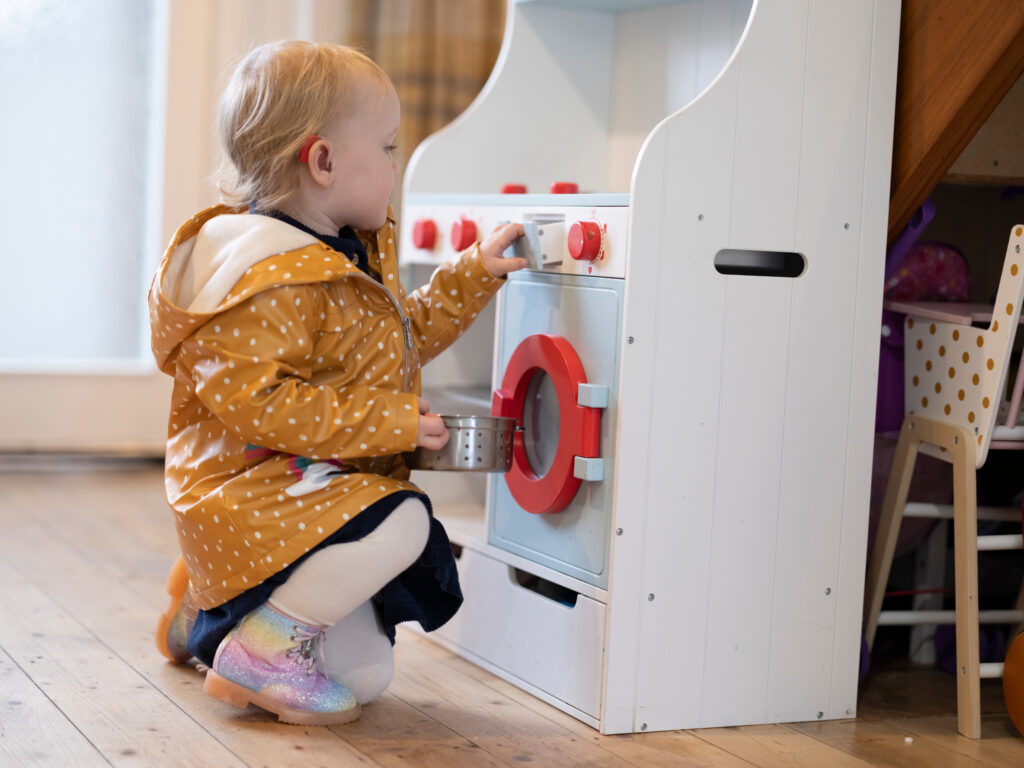Toys for Development of Speech and Language

Toys that promote imaginative play, turn-taking, problem-solving, and social interactions create opportunities for children’s development. They encourage both receptive (understanding) and expressive (speaking) language. These activities not only help with vocabulary building but also with mastering more complex language skills such as grammar, sentence formation, and storytelling.
Types of Toys That Support Speech and Language Development
1. Pretend Play Toys
Imaginative play is one of the most powerful ways to develop language skills. Pretend play toys encourage children to use their imagination, take on different roles, and create stories—all of which require language. Additionally, children learn new vocabulary, practice conversational skills, and develop a deeper understanding of how language is used in different contexts.
Examples:
- Dollhouses, action figures, and play sets: These toys provide endless opportunities for pretend play, allowing children to create stories, act out daily routines, and practice dialogue.
- Play kitchens, doctor kits, and tool sets: These toys encourage role-playing and help children learn the names of everyday objects and actions.
2. Books and Storytelling Toys
Books are some of the best toys for developing speech and language skills. By reading with your child, you’re helping them develop vocabulary, comprehension, and listening skills. Stories also teach important concepts such as cause and effect, sequencing, and problem-solving. Many books are designed to engage children actively, helping them respond to questions or even participate in the story.
Examples:
- Board books with simple text and colorful pictures: These are perfect for babies and toddlers, encouraging them to listen and point to pictures as you read aloud.
- Interactive books: Books with flaps, textures, and sounds encourage children to engage and respond, reinforcing language learning.
- Storytelling toys: For example, toys like plush animals or figures that can “speak” or interact with the child allow them to create stories and engage in conversational exchanges.
3. Building and Sorting Toys
Toys that involve building or sorting, such as blocks, stacking toys, and puzzles, may seem unrelated to language development at first. But they actually provide great opportunities for communication. These toys require children to follow directions, identify shapes/colors, and describe their actions, which also strengthens their language skills.
Examples:
- Building blocks: Simple blocks or more complex sets like LEGO can help children describe their actions and articulate ideas, such as “I’m building a tower” or “This block is red.”
- Shape sorters and puzzles: These toys help with categorization, shape recognition, and spatial awareness, which can later translate into more complex language concepts.
4. Music and Sound Toys
Music-based toys can be a fun and engaging way to develop both receptive and expressive language. The rhythm, repetition, and melody in music help children process sounds, develop listening skills, and use language in a rhythmic way. These toys also help with memory, as children often remember songs or chants and can repeat them.
Examples:
- Musical instruments: Simple instruments like tambourines, maracas, or xylophones allow children to explore sound while developing motor skills.
- Singing toys or musical books: Toys that sing songs or make sounds when activated help children tune into rhythm and melody.
5. Cause-and-Effect Toys
Cause-and-effect toys are excellent for helping children understand the relationship between their actions and the world around them. As children begin to understand that pressing a button makes a sound or moving a lever causes something to happen, they also begin to understand how their words can produce effects in the world.
Examples:
- Push-button toys: Toys with buttons that produce sounds, songs, or lights help children understand cause-and-effect relationships.
- Interactive toys: Toys that respond to a child’s actions. One example is animal toys that make sounds when touched. These are great for learning cause-and-effect.
Always choose toys that match your child’s developmental stage. And remember, always encourage interaction and limit screen time.
References
- Toys to encourage speech development in toddlers (no date) My Toddler Talks. Available at: https://www.mytoddlertalks.com/toys (Accessed: 02 January 2025).
